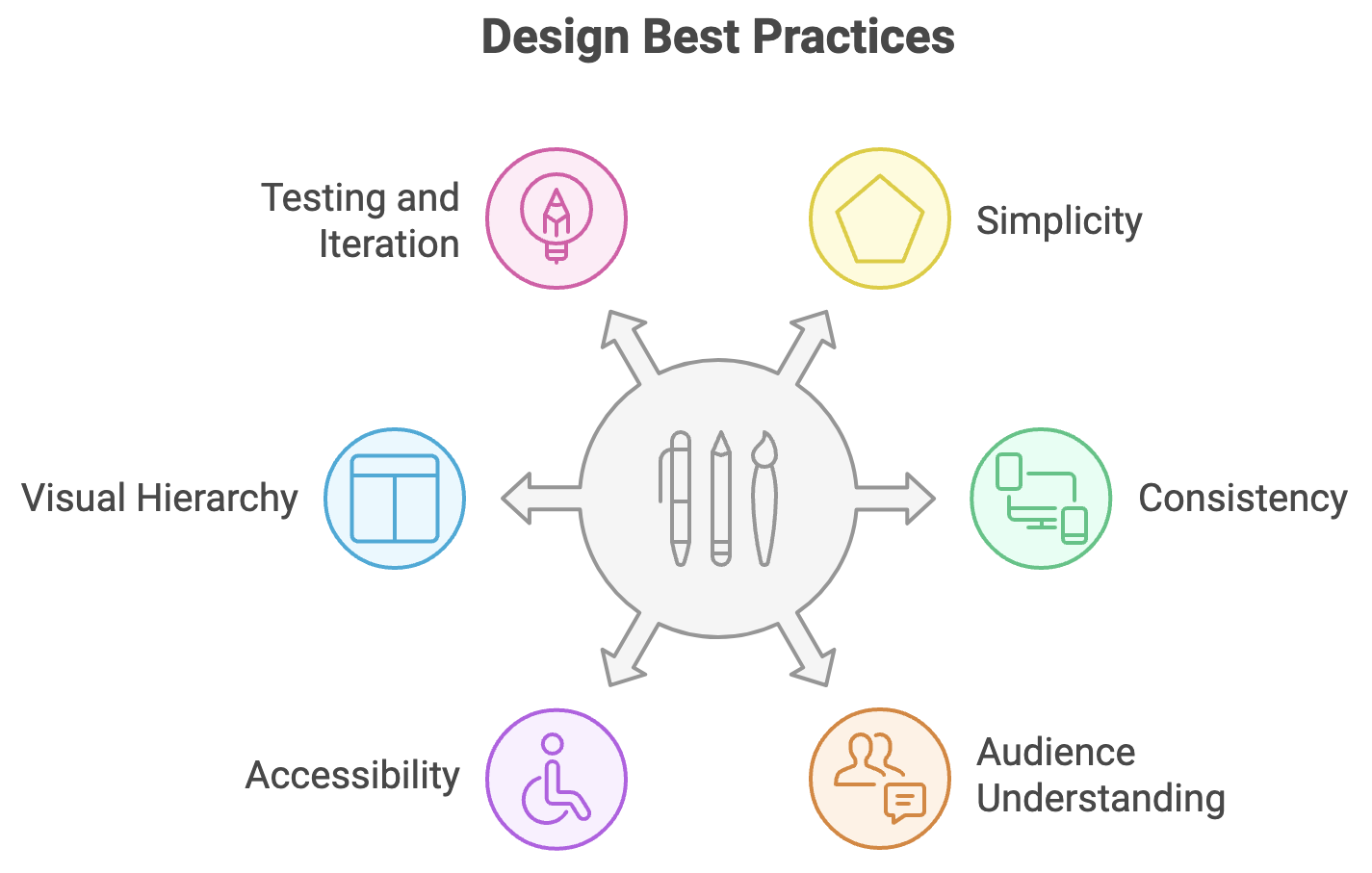Introduction Great design is the foundation of memorable user experiences and impactful brand presence. Whether you’re designing for web, mobile, or print, following best practices ensures your work is both functional and aesthetically pleasing. Here are six essential design practices to elevate your projects.

1. Prioritize Simplicity
Less is more in design. Avoid clutter by focusing on essential elements and eliminating unnecessary details. A clean, simple layout improves usability and creates a professional impression.
Tip: Use white space strategically to enhance visual hierarchy and readability.
2. Maintain Consistency
Consistency in fonts, colors, and spacing creates a cohesive look and feel across your designs. It reinforces brand identity and improves the user experience.
Tip: Develop a style guide or design system to ensure consistency across projects.
3. Understand Your Audience
Design with the end-user in mind. Research your audience’s preferences, behaviors, and needs to create solutions that resonate and solve their problems effectively.
Tip: Use personas and user journey maps to guide your design decisions.
4. Optimize for Accessibility
Inclusive design ensures your work is accessible to everyone, including individuals with disabilities. Use readable fonts, high contrast colors, and descriptive alt text for images.
Tip: Test your designs with tools like WAVE or axe to identify accessibility issues.
5. Focus on Visual Hierarchy
Guide users’ attention to the most important elements first. Use size, color, and positioning to establish a clear flow of information.
Tip: Use grid systems to align elements and maintain balance in your layouts.
6. Test and Iterate
Design is an iterative process. Test your work with real users to identify pain points and gather feedback. Use insights to refine and improve your designs.
Tip: Conduct A/B testing to compare variations and choose the most effective option.
Conclusion
Adopting these best practices helps you create designs that are not only visually appealing but also functional and user-centric. By prioritizing simplicity, consistency, and accessibility, while embracing iteration, you can deliver exceptional design solutions every time.



Do you mind if I quote a few of your articles as long as I provide credit and sources back to your blog? My blog is in the very same niche as yours and my visitors would genuinely benefit from a lot of the information you provide here. Please let me know if this ok with you. Thanks a lot!